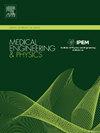Enhancing polyp classification: A comparative analysis of spatio-temporal techniques
IF 1.7
4区 医学
Q3 ENGINEERING, BIOMEDICAL
引用次数: 0
Abstract
Colorectal cancer (CRC) is a major health concern, ranking as the third deadliest cancer globally. Early diagnosis of adenomatous polyps which are pre-cancerous abnormal tissue growth, is crucial for preventing CRC. Artificial intelligence-assisted narrow-band imaging colonoscopy can significantly increase the accuracy of polyp characterization during the endoscopy procedure. This study presents a comprehensive comparative analysis of the performances of three different deep architectures for incorporating temporal information alongside spatial features for colon polyp classification. We employed three different models namely, time-distributed 2D CNN-LSTM, 3D CNN, and hybrid 3D CNN-ConvLSTM2D model and evaluated their performance of polyp characterization using a real-world clinical dataset of NBI colonoscopy videos of 64 different polyps from 60 patients in India. Additionally, cross-dataset validation on a publicly available dataset demonstrated the generalizability and robustness of the proposed model. The 3D CNN-ConvLSTM2D model outperforms the other two in terms of all evaluation metrics. Notably, it achieved a mean NPV of 92%, surpassing the minimum NPV threshold set by PIVI guidelines for reliable polyp diagnosis which demonstrates its suitability for real-world applications. The performance of the proposed deep architectures is also compared with some existing methods proposed by other researchers, and 3D CNN-ConvLSTM2D model demonstrates significant improvements in both NPV and overall performance metrics in comparison with the other existing methods, while also effectively reducing false positives. This study demonstrates the effectiveness of employing spatiotemporal features for accurate polyp classification. To the best of our knowledge, this is the first study performed, using exclusively NBI polyp dataset, to investigate the effectiveness of spatiotemporal information for polyp classification.
求助全文
约1分钟内获得全文
求助全文
来源期刊

Medical Engineering & Physics
工程技术-工程:生物医学
CiteScore
4.30
自引率
4.50%
发文量
172
审稿时长
3.0 months
期刊介绍:
Medical Engineering & Physics provides a forum for the publication of the latest developments in biomedical engineering, and reflects the essential multidisciplinary nature of the subject. The journal publishes in-depth critical reviews, scientific papers and technical notes. Our focus encompasses the application of the basic principles of physics and engineering to the development of medical devices and technology, with the ultimate aim of producing improvements in the quality of health care.Topics covered include biomechanics, biomaterials, mechanobiology, rehabilitation engineering, biomedical signal processing and medical device development. Medical Engineering & Physics aims to keep both engineers and clinicians abreast of the latest applications of technology to health care.
 求助内容:
求助内容: 应助结果提醒方式:
应助结果提醒方式:


